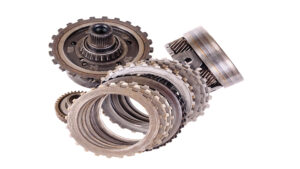How To Retain A Bolt
In previous episodes we’ve covered the different types of fasteners and bolts as well as how to identify different bolts. Now we’re going to take a look at how to retain those bolts.
The most obvious way to retain a bolt would be a nut. There are several different types of nuts and usually, when you see one you’ll see a washer along with it. Washers are important because when you’re installing a bolt to a bracket and start turning the bolt, the washer keeps the bolt from marring what you’re bolting it to. That also applies to the side where you will put the nut. A lock washer is a common way to keep a nut tight because it’s spring loaded and the tighter you make the nut, the more pressure it will apply and lock it to the thread.
The alternative way is using a lock nut or a nylon locking nut. The problem with those is that they’re typically only good for one use. There are several different types of lock nuts aside from just the nylon. The flange locking nut has both a flange and teeth to keep it in place. Another kind of lock washer is the star washer. The angled teeth bite into the metal that you’re screwing the bolt into.
Another retainer would be the castle nut. It’s got grooves so after you tighten it onto a bolt, you line the grooves up with the hole and slide a cotter pin through and bend the tabs over. These are common in suspension applications. Jam nuts, when screwed together, keep the bolt from turning.
All of those methods are mechanical. But there is a chemical way to retain bolts. Threadlocker, usually blue (or medium strength), is good for most jobs. But if you really need it on there good for suspension components or flywheel bolts, the red high strength is what you’ll want to go with.









